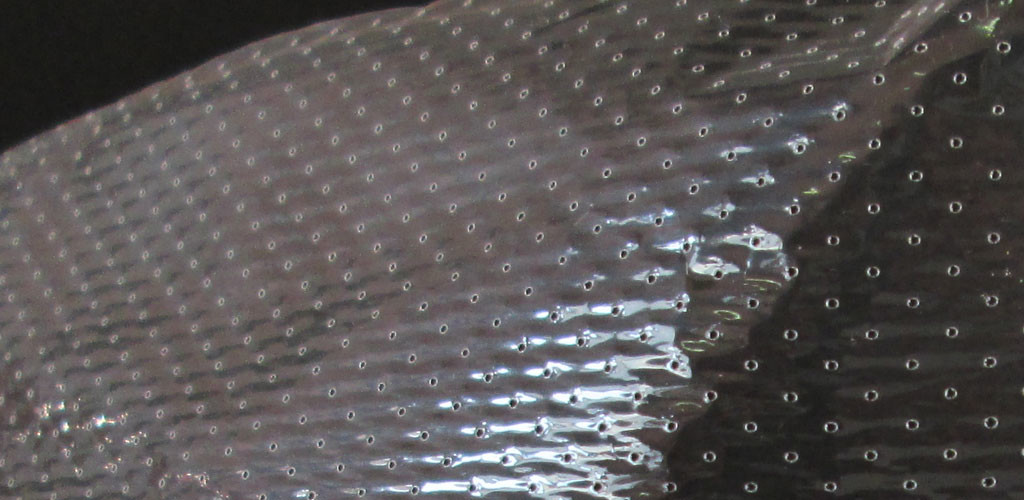 As per the latest analysis from Future Market Insights (FMI), the micro perforated films packaging market is anticipated to see steady growth until 2023, with a 3.6% rise in sales year over year. The market is expected to grow at a compound annual growth rate (CAGR) of 4.5% between 2023 and 2033, reaching US$ 2.28 billion by 2033. In 2023, the market is expected to reach US$ 1.46 billion. This optimistic trajectory underscores the sustained demand for micro perforated films in packaging applications, driven by factors such as increased consumer awareness, technological advancements, and the growing emphasis on sustainable packaging solutions.
As per the latest analysis from Future Market Insights (FMI), the micro perforated films packaging market is anticipated to see steady growth until 2023, with a 3.6% rise in sales year over year. The market is expected to grow at a compound annual growth rate (CAGR) of 4.5% between 2023 and 2033, reaching US$ 2.28 billion by 2033. In 2023, the market is expected to reach US$ 1.46 billion. This optimistic trajectory underscores the sustained demand for micro perforated films in packaging applications, driven by factors such as increased consumer awareness, technological advancements, and the growing emphasis on sustainable packaging solutions.
The growing focus on environmental conservation and sustainability is a major market driver. The need for eco-friendly packaging substitutes has increased as a result of plastic packaging’s notable role in the worldwide plastic waste problem. Microperforated films, which are lightweight, easy to recycle, and capable of reducing food waste, are emerging as a sustainable alternative to traditional packaging materials. In an attempt to mitigate the environmental impact of conventional plastic packaging, this makes them a favored option for both businesses and consumers, aligning with the growing awareness of and dedication to ecologically responsible packaging techniques.
Request Sample Reports: https://www.futuremarketinsights.com/reports/sample/rep-gb-2114
Key Takeaways:
- The market in the United Kingdom is expected to rise with a CAGR of 4.9% through 2033.
- The United States dominated the market in 2022, holding a 20.2% share of the global market.
- Japan held a 6.2% market share globally in 2022.
- India is predicted to develop prominently in the market, with a CAGR of 5.8% over the forecast period.
- China is expected to proliferate, registering a CAGR of 5.7% over the forecast period.
- Germany accounted for 3.9% of the global market in 2022.
Competitive Landscape:
The top manufacturers of the micro perforated films packaging market are
- Amcor Limited,
- Darnel Group,
- UFlex Ltd.,
- Sealed Air Corporation,
- Bollore Group,
- NORDFOLIEN GmbH,
- Mondi Group,
- TCL Packaging Limited,
- KOROZO Ambalaj San,
- ve Tic A.S, C
- overis Holdings SA, and
- others.
Key players in the micro-perforated films packaging market concentrate on developing cutting-edge packaging options that can maintain the quality and freshness of perishable commodities like fresh produce and bakery goods. Through the use of recyclable materials and eco-friendly alternatives, they are investing in research and development to enhance the functionality and sustainability of micro perforated films.
Recent Developments:
- In January 2023, the Duino mill in Trieste (Italy) was acquired by Mondi plc (‘Mondi’) for a total sum of US$42.95 million from the Burgo Group.
- In December 2022, Amcor declared the launch of a brand-new and cutting-edge manufacturing facility in China.
Opportunities for Micro Perforated Films Packaging in Key Markets
- United States: Lucrative market driven by food spending and sustainability focus. Increased demand for convenient, healthy, and fresh food options, along with a rise in e-commerce, contributes to market growth.
- Brazil: Growing market fueled by specific consumer preferences. Esthetics, convenience, quality, safety, and sustainability in food packaging align with benefits offered by micro perforated films, meeting demands of budget-conscious consumers.
- China: Exponential market growth driven by e-commerce and health focus. The packaging industry expands rapidly with the growth of e-commerce giants and the emphasis on health and wellness, increasing the demand for micro perforated films.
- India: Environmental regulations influence micro perforated films sales. Ongoing environmental regulations and efforts to ban certain plastic packaging drive adoption of micro perforated films, addressing concerns related to recyclability and wastage.
- United Kingdom: Steady growth supported by population increase and e-commerce. Increasing population and rise of convenience foods drive market expansion, particularly in the food and beverage industry.
- Germany: Focus on sustainability and food waste reduction drives market. Strict regulations on food safety and packaging waste reduction encourage adoption of sustainable packaging solutions like micro perforated films.
- Japan: Sustainable packaging demand propels market surge. Increasing popularity of ready-to-eat meals and demand for sustainable and eco-friendly packaging contribute to market opportunities, meeting the country’s focus on food safety and waste reduction initiatives
Buy Now/Purchase: https://www.futuremarketinsights.com/checkout/2114
Market Segmentations
By Material Type:
- PE
- PP
- PET
- PVC
- PA
By Packaging:
- Bags
- Pouches
- Wraps/ Rolls
- Sleeves
By Technology:
- Mechanical perforation
- Laser perforation
By Region:
- North America
- Latin America
- Europe
- Asia Pacific
- Australasia
- Middle East and Africa




